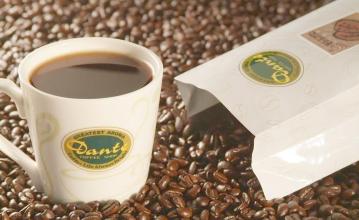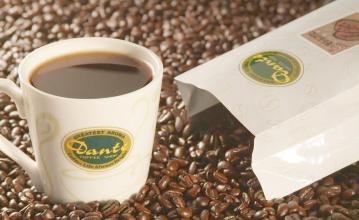Taste clean and meticulous Cuban crystal coffee flavor manor boutique coffee beans introduction
The country is divided into 15 provinces, one special zone, and 168 cities under the province. [3] the names of the provinces are as follows: Binaldrio (Pinar del R í o), Artemisa (Artemisa), Mayabek (Mayabeque), Havana (Provincia de la Habana, capital) Established for provincial cities), Matansas (Matanzas), Cienfuegos (Cienfuegos), Viaclara (Villa Clara), Sancti Spiritus (Ciego de á vila), Camag ü ey (Camag ü ey), Las Tunas (Las Tunas), Holguin (Holgu í n), Grama (Granma), Santiago (Santiago de Cuba)
Havana, the capital of Cuba
Havana, the capital of Cuba
, Guant á namo (Guant á namo) and Youth Island District (Municipio Especial Isla de la Juventud). Except for the provincial capital of Havana, the provincial capital of Havana, the provincial capital of Viacra, the provincial capital of Santa Clara (Santa Clara), the provincial capital of Grama, the provincial capital of Bayamo, the provincial capital of Mayabek, San Jose Delas Lajas, and the capital of the Special Administrative region of Youth Island, Nueva Gerona, the provincial capitals are all 370km long with the longest river of Cuba, R í o Cauto, with the same name. [1] Cuba has more than 200 rivers and thousands of streams, most of which run north-south, so the current is shallow and fast. The Cato River, which flows east-west to the north of the Maestra Mountains, is the largest river in Cuba, but it is only 370 kilometers long and is the only navigable river in Cuba. Cuba's coastline is tortuous, generally steep in the north and flat in the south, with many good ports. Almost all of them are bays in the shape of pockets and bellies, which are very beneficial to shipping. Among the important bays are: Havana Bay, Nippe Bay, Guantanamo Bay, Santiago Bay, Sienfugos Bay, Onda Bay and Matansas Bay 11.2383 million (2014), of which whites account for 66%, blacks account for 11%, people of mixed race account for 22%, Chinese account for 1%, urban population accounts for 75%. The official language is Spanish, which is mainly Catholic, African, Protestant, Cuban and Jewish. [9]
According to Cuba's National Bureau of Statistics, 75 per cent of Cuba's population lives in cities, or more than 8.465 million people. The population living in rural areas is just over 2.775 million. [10]
In terms of gender, there are more than 5.612 million women in Cuba and 5.629 million men, who slightly outnumber women. Statistics show that Cuba's population growth rate is extremely low. In addition, due to the decline in the fertility rate of women of childbearing age, the aging population will become more and more serious in the future.
Crystal Mountain Coffee beans are typical island beans with a clean and delicate taste, slightly sour taste, not strong but long-lasting, with sweet fruit aromas. The coffee brewed by it has a rare and perfect taste: it is bitter with aroma and a mellow and smooth taste. It slightly contains wine-like bitterness and a touch of sweetness, and even a hint of tobacco, meticulous and smooth, fresh and elegant. Many flavors are mixed together, and the match is almost perfect.
In Cuba, most of the coffee beans are picked by hand. Coffee beans are picked about every half a month during the ripening period. During or after picking, coffee beans are classified and those immature and bad beans are removed to ensure the quality of the coffee. Cubans usually deal with coffee beans in two ways-tanning and washing. Tanning is the simplest, cheapest and most traditional way to treat coffee, which is to let the coffee fruit dry in the sun but not ferment. The general drying time is about four weeks. The law of washing makes the aroma of fruit more into the coffee beans, thus adding a crude, fruity flavor to coffee. Coffee was introduced to Cuba from Domiga in 1748, and coffee has been grown in Cuba ever since. With fertile land, humid climate and abundant Rain Water, Cuba can be called a natural treasure land for coffee cultivation. The suitable natural conditions provide a favorable natural environment for the growth of coffee trees, and coffee is well planted and developed here. In Cuba, the cultivation of coffee is regulated by the state. The best coffee growing area in Cuba is located in the Central Mountains. Because this area not only grows coffee, but also produces quartz, crystal and other precious minerals, it is also known as Crystal Mountain. At present, Crystal Mountain Coffee is synonymous with top Cuban coffee. One of the remarkable features of Crystal Mountain Coffee is that the particles are large and the color of coffee beans is bright green.

Important Notice :
前街咖啡 FrontStreet Coffee has moved to new addredd:
FrontStreet Coffee Address: 315,Donghua East Road,GuangZhou
Tel:020 38364473
- Prev

Cedar Chiso Coffee taste Cedar Chiso Flavor
In February 1977, Lieutenant Colonel Mengistu Haier Maryam (MENGISTU HAILE MARIAM) launched a military coup and served as Chairman of the interim military Administrative Council and head of State. In 1979, the Ethiopian Labor people's Party Organization Committee, dominated by soldiers, was established to implement an one-party system. In 1984, the Ethiopian Workers' Party was formed according to the Soviet Communist Party model. Mengistu, September 1987
- Next

Laresco Coffee Flavors Laresco Coffee Features
Puerto Rico was originally inhabited by the Indian Taino tribe. Christopher Columbus sailed here in November 1493 and named it San Juan in honor of John the Baptist. In 1508 the Spaniard J. Ponce de Leon established a colony on the island and was appointed governor the following year. It became a Spanish colony in 1509. The original island.
Related
- Detailed explanation of Jadeite planting Land in Panamanian Jadeite Manor introduction to the grading system of Jadeite competitive bidding, Red bid, Green bid and Rose Summer
- Story of Coffee planting in Brenka region of Costa Rica Stonehenge Manor anaerobic heavy honey treatment of flavor mouth
- What's on the barrel of Blue Mountain Coffee beans?
- Can American coffee also pull flowers? How to use hot American style to pull out a good-looking pattern?
- Can you make a cold extract with coffee beans? What is the right proportion for cold-extracted coffee formula?
- Indonesian PWN Gold Mandrine Coffee Origin Features Flavor How to Chong? Mandolin coffee is American.
- A brief introduction to the flavor characteristics of Brazilian yellow bourbon coffee beans
- What is the effect of different water quality on the flavor of cold-extracted coffee? What kind of water is best for brewing coffee?
- Why do you think of Rose Summer whenever you mention Panamanian coffee?
- Introduction to the characteristics of authentic blue mountain coffee bean producing areas? What is the CIB Coffee Authority in Jamaica?

